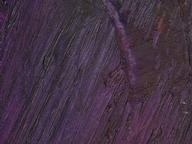Quiz Answer Key and Fun Facts
1. (1) In ornithology, a small songbird with feathers that appear iridescent bluish-purple: _______ bunting. (2) In a '90s children's fantasy-action show about virtual reality, a strange dimension: the "_______ Sector."
2. (1) In a whodunit board-game, a murder suspect known for his cunning intellect: Professor _______. (2) Among canine enthusiasts, a nickname for Dalmatians due to their dark speckles: _______ Pudding Dog.
3. (1) In botany, the Guinness World Record holder for "largest blossoming plant": the Sierra Madre (or Chinese) _______. (2) In television, the street where most of "Desperate Housewives" takes place: _______ Lane.
4. (1) In food, an antioxidant-rich color variant of a typically orange vegetable: _______ carrot. (2) In the English language, a workplace or recruiting idiom used to describe an impossibly ideal job candidate: _______ squirrel.
5. (1) In medicine, a term for a brightly discolored mouth muscle associated with a vitamin deficiency: _______ tongue. (2) In history, a a major conflict in the Second Italian War of Independence: the Battle of _______.
6. (1) In children's literature, a girl who looks like a giant blueberry after eating an experimental candy: _______ Beauregarde. (2) In the English language, an idiomatic reference to a socially timid person: shrinking _______.
7. (1) In music, a Doris Day song in which a woman looks forward to marrying the man she loves: "_______ Blue." (2) In television, a recurring fictional character who often appeared in questions on "Match Game": Old Man _______.
8. (1) In music, popular Australian rapper Iggy Azalea's birth name: _______ Amelia Kelly. (2) In the natural sciences, a bitter mushroom whose bright coloration gradually fades away, making it hard to recognize: _______ deceiver.
9. (1) In science, the first synthetic dye, named for the chemist who accidentally discovered it in 1856: Perkin's _______. (2) In history, a late-19th-century period of social prosperity, named for the recently invented color's popularity at the time: the "_______ Decade."
10. (1) In music and film, a folk song heard in Disney's "So Dear to My Heart" and "Cinderella" about a someday king who longs for his queen: "_______ Blue." (2) In video games, an eerie village haunted by the ghosts of Pokemon monsters: _______ Town.
Source: Author
MrNobody97
This quiz was reviewed by FunTrivia editor
agony before going online.
Any errors found in FunTrivia content are routinely corrected through our feedback system.
